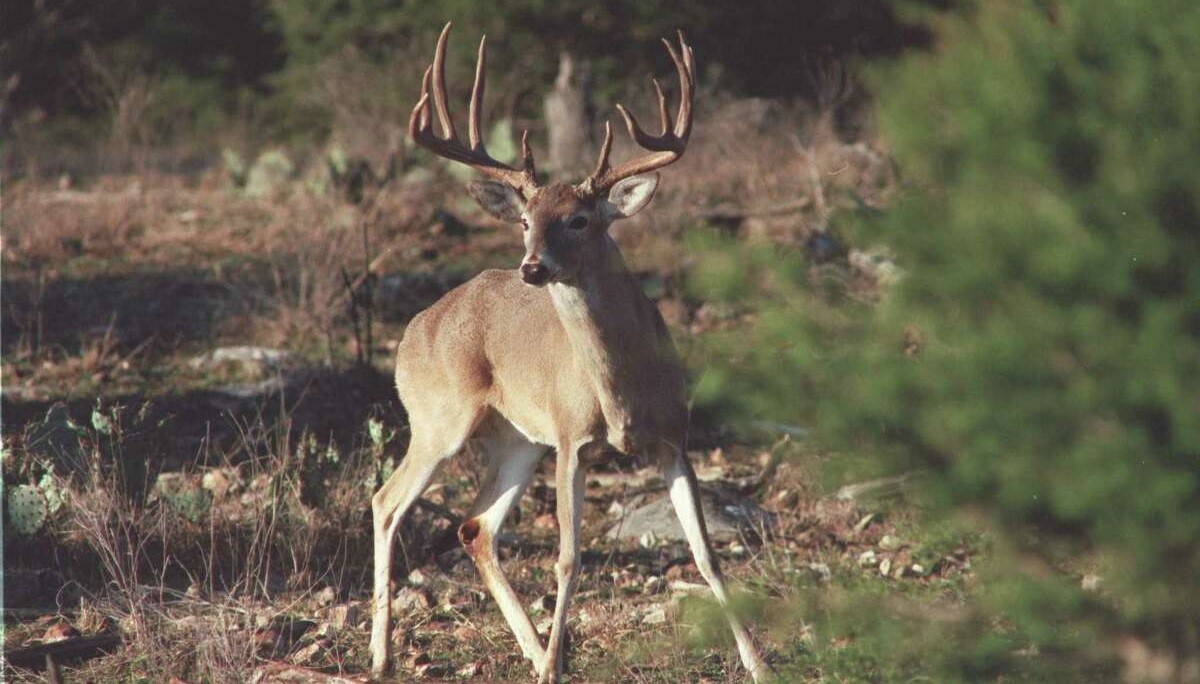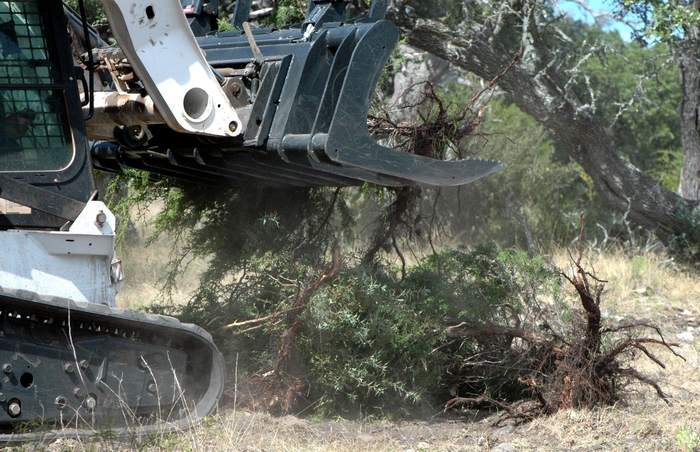Deer management can be an exciting and rewarding endeavor, but land managers often find the process daunting, and possibly confusing. This site is dedicated to helping land managers better understand how to manage a white-tailed deer herd. It offers science-based information and techniques that will help you improve deer and their habitat. As deer hunting has grown in popularity across the U.S., both landowners and hunters want to know what they can do to produce quality white-tailed deer.

Although whitetail are found in a variety of habitats, similar management techniques can be used effectively on properties to improve a deer herd. We cover the details of habitat enhancement, white-tailed deer forage requirements, cover types required by deer, deer surveys — anything related to deer herd improvement. The information found within this site will help you develop strategies to move forward with an effective deer management program on your property!
Deer Management Overview
You are here because like most land managers and deer hunters you want a high-quality white-tailed deer herd on your property. The social emphasis on quality deer combined with the economics of hunting have caused a marked increase in the number of individuals interested in deer management. Regardless of why you want to better the deer herd on your property, we will offer you practical ways to do it.
White-tailed deer are amazing creatures because of the diversity of habitats they can survive in, their smarts, and the fact that they also make great table fare. Deer habitat varies greatly across the United States, but the techniques that can be used to improve and manage a deer herd remain the same from area to area. Although each situation is different and requires local considerations, general guidelines can be followed which will lead to a better deer management program — and better deer hunting.
When it comes to deer management, it is really about habitat management. Producing quality deer involves enhancing and maintaining high-quality deer habitat that provides both food and cover. Without adequate escape cover, you will not hold deer on your property. Without proper fawning cover, you will not produce deer. And without proper whitetail food, deer will never achieve the quality of deer you desire.

The total number of deer using a property is critically important. Not only can deer density impact the body condition of individual animals, but even your buck to doe ratio can effect herd dynamics. If this sounds new to you, then you have stumbled into the right place. Again, this site is focused on helping dedicated landowners and sportsmen better manage the deer habitat and deer herds found on their lands. Let’s keep the momentum going!
As you will notice across the top menu, topics on the Deer Management site cover the necessary components for a healthy deer herd that will help you produce and maintain more and better trophy whitetail bucks! You do not need to bring in stocker deer to have bigger bucks. There are no secrets to producing a healthy deer herd and high-quality bucks, but you do have to be committed to:
- Maintaining or improving deer cover
- Improving deer nutrition
- Conducting deer surveys annually
- Harvesting deer based on what the data says
Best Option for Deer Management?
Land managers and hunters often want to know what is the best option for deer management on their land? There is no easy answer to this question because each property is different from another. The deer herd that uses a property is different from one another. In addition, the people managing a deer herd do not always have the same goals and objectives.
Articles found on the site cover specific management strategies for deer. Some are very straight forward. However, it’s not always easy. Improving a deer herd requires a good amount of time and a fair amount of work. But if you are dedicated to having a successful deer management program, then installing food plots, performing deer surveys, learning key whitetail plants, enhancing habitat, and selectively harvesting deer will help you achieve your goals.
How do You Manage Deer on a Property
It all starts from the ground up. Actually, it starts below the ground — soils. Soils and precipitation are super important when it comes to the ability of a property to produce forage for deer. You’re thinking, “I can’t change the soils found on my property.” And yes, you are correct. It is important, however, to acknowledge what you can and can not do on different parts of your property. This will relate directly to the habitat and habitat practices that are implemented on certain parts of your property.
White-tailed deer eat a variety of plants, and different plants become important during different times of the year. As for any wildlife species, the most important seasons for deer are the seasons in which they are most stressed —summer and winter. It is during these two periods that whitetail have the least amount of food available to them.
Of course, summer stress is not nearly as hard at northern latitudes (such as the mid-west), just as winter stress is not nearly as tough at southern latitudes (such as Texas). Why do I mention things such as food resources and stress, and how does that relate to deer body condition? Well, as you will learn, body condition of both bucks and does is the most important component of your deer herd. And does are more important than bucks when managing a deer herd!

What is Quality Deer Management?
Most land managers and hunters interested in deer are interested in quality deer management. This idea centers around the concept that habitat is enhanced on a property and deer numbers are manipulated so that they are in balance with the natural forage found on the property. It can be taken even further if age-based, selective harvest is implemented to maintain good age structure within the buck segment of the population.
One of the pitfalls of deer management is just addressing habitat or just addressing the deer population. You can’t just shoot “cull bucks” and call it deer management. For real results, it takes healthy plant communities and the right number of deer. Too many deer means not enough food per animal. Too few deer and the overall hunter experience declines with harvest opportunities. Like anything that is to be managed, the goal/s should be determined prior to starting. Then, objectives can be established by the land manager to reach the goal/s.
One objective of a land manager is to find the balance between the natural food supply on the land and the deer using it. The individual body condition of each deer using your property comprises the building blocks of your deer herd. I will not tell you that you need to go out and buy supplemental feed or plant a high-dollar food plot mix (you sure can), but I will tell you that food is what you must ultimately seek to manage for in order to improve your deer herd.
Managing for quality habitat and quality deer means:
- Habitat enhancement
- Providing plant communities
- Maintaining appropriate deer numbers
- Maintaining desired buck to doe ratio
- Conducting deer surveys annually
- Developing harvest recommendations using data
- Buck harvest using age-based criteria
To make this happen, sometimes you have to put in work making the property better. At other times, you may have to grab a gun and reduce the number of animals using the property. Realistically, it’s going to take a combination of these actions on an annual basis.
How Many Acres for Deer Management?
White-tailed deer management can take place on any size property. However, a manager must realize that management on a property of 100 acres will be different than a property of 1,000 acres or 10,000 acres. Managing deer on small acreage definitely has some limitations. For example, most deer have ranges 4-10 times larger than 100 acres, so the management, lack of management or mismanagement of neighboring lands is always going to be a factor effecting the deer using your property.
A large acreage property is also difficult to manage because of the scale at which everything takes places. Habitat enhancement is more difficult (and costly), conducting surveys to estimate deer numbers is more challenging, and meeting annual harvest requirements takes more time. It takes a lot of effort to reduce a deer population by 100, 200 or more animals on an annual basis.
I hope that it’s becoming obvious that there are no shortcuts to managing whitetail and their habitat. But as challenging as it can be, it’s also just as rewarding. Land managers experience a great deal of satisfaction by improving the habitat found on a property and the deer herd found there through active management.
There is no one way to improve a deer herd. The practices and strategies necessary will vary by property and situation. Practices and strategies will vary on a property over time. This site covers the numerous options land managers have when it comes to habitat and deer herd improvement. There are several ways to get there and they are discussed in detail, by topic, throughout this site. As I said earlier, there are no secrets to deer management, but it will take time and work. You can do it.